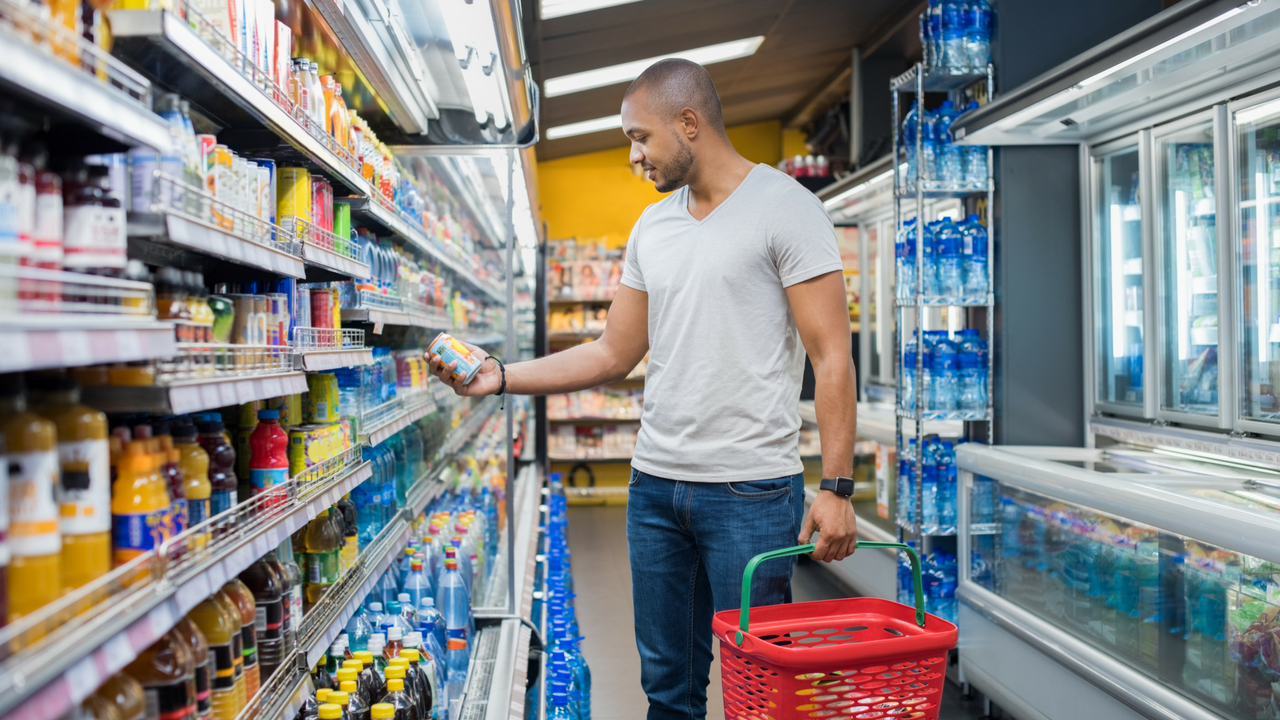- Design industry shaping loyalty programs
- Integrate easily and go live quicker
- Deliver hyper-personalized consumer experiences
Blue Rewards from Al Futtaim Group Shares Loyalty Success Stories and Evolution. Watch Podcast >
Capillary Announces 2nd Annual Captivate 2025 Summit: Transforming Loyalty Management with New AI Tech Read more >

The hypermarket industry, like many other consumer-facing sectors, is undergoing a massive transformation. With the rise of digital and mobile technologies, consumers now expect seamless, connected experiences across channels—experiences that innovative brands are already delivering. Consumers now live in an EasyVerse™ and expect such easy experiences everywhere.
Yet, many retailers struggle to keep up with the demands of today’s “always-on” digital consumers. According to a 2022 Brick Meets Click survey, more than 80% of grocery executives and 73% of store associates said upgrades to store technology are necessary to deal with digital sales. For hypermarkets, this gap poses a serious challenge, especially in an industry already grappling with tight profit margins. Falling short on customer experience and cross-channel presence could have long-term repercussions.
So, how can hypermarkets boost revenue and unlock sustainable growth? It boils down to doing fewer things, but doing them exceptionally well—and making sure your customers know it. Let’s explore four key hypermarket strategies to help your business achieve hypergrowth.
A hypermarket is like a one-stop shop that brings together the best of both worlds—a department store and a grocery store—all under one roof. Think of popular names like Walmart Supercenter, Super Target, or Fred Meyer. These massive stores offer everything from fresh groceries and clothing to home appliances and more, making them a go-to destination for just about anything you need. With their size and extensive product range, hypermarkets take convenience to a whole new level, going far beyond what supermarkets typically provide.
Running a hypermarket comes with its challenges, especially with razor-thin margins and tough competition from massive national chains. Dropping prices isn’t always an option without cutting into profitability, so how do you stand out and bring customers through the doors? This is where smart marketing strategies come into play.
To show customers that your store is their best choice—not just for essentials but also for those tempting extras they didn’t plan on—you need a well-thought-out marketing plan. After all, people are at the heart of your business, and understanding their needs and preferences is key to creating campaigns that resonate.
A great marketing strategy starts with understanding your audience, the competitive landscape, and what sets your store apart. From there, you can focus on the channels and tactics that make the most sense to engage your customers. By highlighting your unique selling points and leveraging creative ideas, you can carve out a strong position in the market, build loyalty, and keep customers coming back for more.
While it’s established that having an online presence is important, just having an e-commerce website is not going to cut it anymore. You can’t go about this with a “build it and they will come” approach. Tech-forward consumers can quickly find out if an application or service is adding any value to them. While you develop digital initiatives, you need to consider if you’re creating value and clearly communicating this value to your consumers.
Therefore, it is a must for hypermarket businesses to leverage their physical and digital assets to optimize the consumer experience they’re providing. Creating a connected and seamless omnichannel shopping experience is a strategic priority for many grocery retailers in 2025.
Apart from having an e-commerce website, hypermarkets are also investing in additional digital touchpoints such as a mobile ordering app, and ordering through home assistants such as Alexa, Google Home, etc. Allowing consumers to buy what they want from your inventory through endless aisles in-store doesn’t just result in customer satisfaction but also helps you mitigate the loss of sales due to stock-outs.
Another popular way hypermarkets are elevating in-store consumer experience is through store associate apps, which can empower your frontline staff with additional information on products, availability of products, nutritional advice, recommendations, and even a single view profile of the customer so they can best serve them. Such solutions can bring the convenience and personalization of online shopping to brick-and-mortar hypermarkets. They can help you increase engagement levels, dwell time, and eventually basket size. Once such touchpoints have been established, the challenge lies in providing a consistent experience across all these physical and digital touchpoints.
Consumers today want, what they want when they want it. This is especially true for hypermarkets where the increased demand for localized products and convenience means businesses have to fulfill consumer expectations through on-demand, hyperlocal delivery. But the last mile has always been the greatest challenge for hypermarkets that have gone online and its optimization will continue to be a priority for 2025.
Providing consumers with multiple methods of purchase and fulfillment can go a long way towards consumer satisfaction as studies have pointed out, consumers are interested in online ordering, pick up in-store, and home delivery based on what is convenient for them at the time. There is also an increased preference for same-day delivery. Offering multiple delivery options and providing consumers with the option of scheduling the time of delivery can help significantly elevate the purchase experience for consumers.
How integrated your store and warehouse systems are with your consumer touchpoints is going to determine how consistent consumer experience is across these touchpoints.
Furthermore, a consumer’s online purchase experience needs to be highly consistent with their offline experience. Apart from exclusive promotions in certain channels, consumers should be able to purchase the same products at the same prices with a similar set of promotions across all channels. How integrated your store and warehouse systems are with your consumer touchpoints is going to determine how consistent consumer experience is across these touchpoints.
Integration of existing systems with Order and Warehouse Management Systems can help you fulfill accurately, efficiently and on time, every time.
People are different and seek different things and varying experiences. What’s memorable for one may be forgettable for another. As most hypermarkets cater to a highly diverse set of people, understanding what they really want and how to make their purchase experience better can feel complicated. The answer lies in your data.
Most hypermarkets are already maintaining a CRM system to keep track of their consumers and their transactions, but how often are you using this data to design personalized experiences for your consumers? Are you able to get a 360° single view of your consumer across channels and use this data to build consumer journeys? Are you able to accurately determine who your best consumers are and what are you doing to retain them, to keep them coming back?
Having accurate insights into your consumers helps you keep them engaged with your brand. It doesn’t just help marketing work better, but it also helps maximize consumer retention and loyalty.
As consumers have more choices than ever before, it’s really not easy to build loyalty and protect it. Grocery retailers must find ways to deepen emotional connections with consumers. Having accurate insights into your consumers helps you keep them engaged with your brand. It doesn’t just help marketing work better, but it also helps maximize consumer retention and loyalty. With the right consumer segmentation, based on consumer insights, you can ensure that all your communications are relevant and personalized, and with a CRM program, you can get full visibility of your consumers and business across channels to ensure your communications are consistent.
But a CRM program alone isn’t going to be enough. Loyal consumers want to be recognized by the brand and rewarded for their loyalty. They want to be a part of an exclusive club. Having a well-designedloyalty program that complements your brand can be a great way to tap into greater consumer retention and higher repeat sales. But you must make your program easy to use.
Personalization is steadily becoming one of the biggest priorities for retailers today as they gather more and more data on consumer behavior and business performance. The challenge here is to use the data and derived insights effectively to push greater growth and profitability for your brand.
Studies say 31% of consumers are prone to switch grocers for personalized offers based on their buying behavior. They seek experiences that are specifically tailored to them. 50% of users who stopped buying online, did so because they couldn’t easily find the products they were looking for. With personalization of the storefront, such cases could be significantly reduced while more repeat sales with greater average basket value could be achieved.
Another trend in hypermarkets today is private-label products. They offer retailers greater control over quality, price, and hence profits. It’s no wonder then that most hypermarket players have already established private-label units.
But is there a way to combine the power of personalization with the higher profits of private labels? Yes, with artificial intelligence-based personalized recommendations and suggestive product bundles, you can push a greater number of private label and/or higher margin products to your consumers. Your consumers find what they were looking for, while you gain from greater margins and higher average basket values.
The hypermarket landscape is evolving rapidly, and staying competitive in this dynamic environment requires a blend of innovation, insight, and customer-centric strategies. From creating seamless omnichannel experiences to leveraging data for personalized engagement and maximizing operational efficiency, the right approach can set hypermarkets apart.
This is where Capillary’s robust loyalty solutions come in. With cutting-edge tools like Loyalty+, Engage+, and Insights+, Capillary empowers hypermarkets to understand their customers better, craft personalized experiences, and reward loyalty in meaningful ways. By combining advanced AI-driven insights with industry-leading tech, Capillary helps hypermarkets drive engagement, enhance customer retention, and ultimately boost profitability.
Connect with Capillary’s Loyalty Experts today to transform your hypermarket’s customer experience and unlock the potential of loyalty-driven growth for your business.
A hypermarket is a one-stop shop combining a department store and grocery store under one roof, offering everything from groceries to appliances. With their size and diverse product range, they redefine convenience and surpass traditional supermarkets.
Running a hypermarket isn’t easy, especially with tight margins and tough competition. The key is to really understand your customers, play to your strengths, and use creative marketing strategies to keep them coming back.
Leveraging Capillary’s comprehensive Product Suite helps hypermarkets connect with customers, create tailored experiences, and reward loyalty effectively. Backed by AI-driven insights and cutting-edge tech, it’s all about driving engagement, boosting retention, and growing profitability.
Grocery Loyalty: 8 Strategies To Revamp Your Loyalty Program
5 Grocery Loyalty Programs from APAC and MEA With Winning Loyalty Strategies

March 1, 2017 | 4 Min Read
‘eCommerce’ seems to be the buzzword these days, with ma

January 10, 2017 | 4 Min Read
Capillary Technologies recently conducted a study of approxi

February 14, 2018 | 4 Min Read
Indian Consumer Goods/FMCG distribution has always been a dy